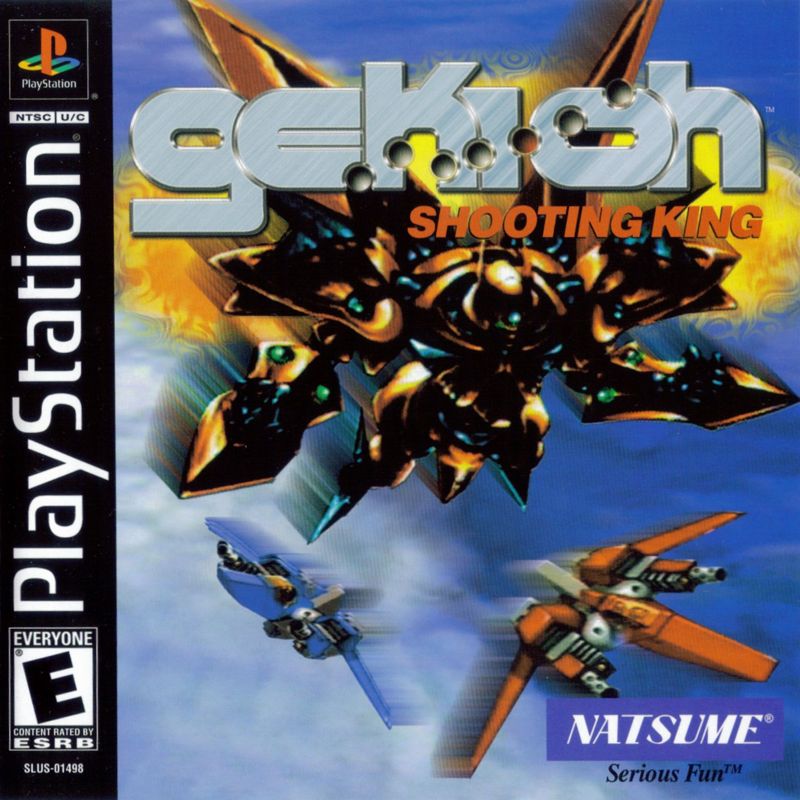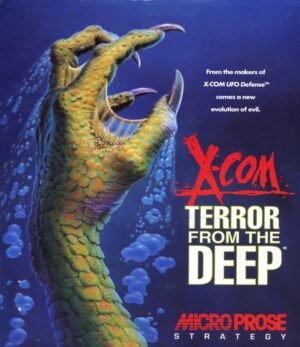Retro Replay Review
Gameplay
Gekioh: Shooting King refines the tight, fast-paced shoot ’em up mechanics of its predecessor, Shienryu, while introducing a suite of inventive game modes that completely alter your approach. At its core, you pilot a ship through waves of patterned enemy fire, collect power-ups, and unleash devastating screen-clearing bombs. The responsive controls and well-balanced difficulty curve ensure that both newcomers and series veterans can jump right in and feel challenged from the first level.
(HEY YOU!! We hope you enjoy! We try not to run ads. So basically, this is a very expensive hobby running this site. Please consider joining us for updates, forums, and more. Network w/ us to make some cash or friends while retro gaming, and you can win some free retro games for posting. Okay, carry on 👍)
The new Pocket Mode puts a whimsical spin on the gameplay, swapping in blocky, heart-shaped foes and pixellated ships reminiscent of early handheld titles. This mode intentionally pares back complexity, limiting the player’s arsenal to basic shots and removing fancy visual effects. It’s perfect for quick pick-up sessions or for nostalgic gamers who want an exaggerated “8-bit” aesthetic without sacrificing core mechanics.
Other specialized variants such as Comical Mode and Stingy Mode introduce fresh constraints and twists. In Comical Mode, every explosion is met with uproarious laughter and applause at high scores, turning each victory into a carnival of sound. Stingy Mode, on the other hand, is truly unforgiving: you have only one life, no continues, and just two levels to conquer. No Mercy Mode caters to bullet-hell purists seeking a steeper challenge, while Slow Mode dials down movement speed, intensifies enemy fire, and overlays horror-style screams for a pulse-pounding experience. Finally, Ancient Mode bathes the action in a yellowed filter with “cracks” across the screen and chiptune-style music, offering a unique retro flavor.
Graphics
At its foundation, Gekioh: Shooting King inherits the polished 2D sprite work and vibrant color palette of the original arcade release. Enemy designs are distinct, and background art is packed with dynamic details that scroll seamlessly, delivering a visually satisfying showcase of mid-’90s shoot ’em up aesthetics. Bullets pop in bright hues, making it easy to track incoming fire, while explosions are lively and impactful.
Pocket Mode radically reinterprets the visuals with intentionally crude pixel art, blocky ships, and heart-shaped enemies that look as though they belong on a monochrome handheld from the late ’90s. This stylized downgrade is executed with deliberate consistency—UI elements, fonts, and even the stage backgrounds adopt the same simplified look, creating a charming retro-toy vibe.
Slow Mode and Ancient Mode each apply distinctive filters and effects to set a dramatically different mood. Slow Mode darkens the entire screen, infusing a horror-themed atmosphere in which every destroyed ship emits a bone-chilling scream. Meanwhile, Ancient Mode overlays a sepia-like tint and simulated “cracks,” evoking the feel of playing on an aged CRT with retro chiptunes in the background. These graphical options ensure the game never feels visually stale, even after multiple playthroughs.
Story
Though primarily a score-attack shooter, Gekioh: Shooting King retains the loose narrative framework of Shienryu: a lone defender ship battling waves of alien invaders to save humanity. The story is minimalistic, conveyed mostly through brief onscreen text before and after stages. This approach keeps the focus squarely on the action, while still providing context for your relentless dogfights against the alien armada.
Game modes like Comical and Ancient Mode play with the narrative tone in delightful ways. Comical Mode’s uproarious sound effects turn the fight into a cheeky spectacle, as if the whole affair is a carnival game. Ancient Mode, with its retro soundtrack and cracked screen, suggests you’re wielding an artifact from gaming’s past, which adds a meta-layer to the simple tale of galactic defense.
Stingy and No Mercy Modes heighten dramatic tension by imposing harsh penalties for mistakes. Knowing that a single hit in Stingy Mode ends your run instantly ramps up the stakes, making each encounter feel urgent and cinematic. Overall, while the storyline never breaks new ground, these mode-specific twists give it enough flair to complement the core shoot ’em up formula.
Overall Experience
Gekioh: Shooting King stands out as more than just a straight port: it’s a creative exploration of how changing one variable at a time can deliver wildly different experiences. Whether you’re in the mood for a laid-back arcade session in Pocket Mode or a heart-pounding marathon in No Mercy, the game adapts to your preferred style. This variety significantly boosts replay value, encouraging players to master each mode’s unique demands.
Newcomers will appreciate the forgiving nature of the base game and Pocket Mode, while seasoned shmup aficionados can tackle the brutal challenges of Stingy and No Mercy Modes or test their nerves in Slow Mode’s horror-themed gauntlet. Ancient Mode provides an extra nostalgic cherry on top, evoking classic handheld vibes without compromising modern responsiveness.
With its crisp core mechanics, inventive mode roster, and playful graphical filters, Gekioh: Shooting King is a must-have for fans of bullet-hell shooters and retro-style arcade games alike. It pays respectful homage to its roots in Shienryu while offering fresh spins that keep the experience feeling new. Whether you aim to chase high scores, conquer every difficulty level, or simply soak in the distinct visual styles, this release delivers a robust package that will keep you shooting for hours on end.
 Retro Replay Retro Replay gaming reviews, news, emulation, geek stuff and more!
Retro Replay Retro Replay gaming reviews, news, emulation, geek stuff and more!




Reviews
There are no reviews yet.